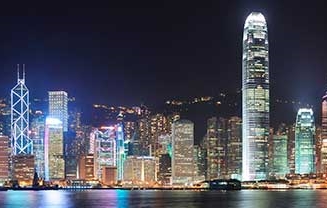Asian cities account for a third of the most visited cities : EI

TBN —
London: Euromonitor International recently released its annual Top City Destinations Ranking, covering 100 of the world’s leading cities in terms of international tourist arrivals.
The continuing increase in arrivals to these cities illustrates their economic strength, as well as the sustained importance of urban centres to global tourism, both business and leisure. These cities combined grew by 5.4% in 2013 –higher than the 4.8% growth experienced by overall international arrivals.
Over a third of all destinations are located in the Asian Pacific region, illustrating strong regional travel trends within Asia, as well as the growing connections throughout the region. Within the top 10, six of the leading cities are from Asia, with the top three remaining unchanged from last year – Hong Kong, Singapore and Bangkok. These three Asian mega-cities serve as some of the top destinations for Chinese travellers as well as being air network hubs.
Bangkok showed the strongest growth among the top 10 cities, up 10.4% from 2012 to reach 17.4 million arrivals, despite political unrest breaking out at the end of the year. Chinese visitors are key to Thailand’s booming arrivals, with close links between the countries as well as efficient and short transport connections.
A new Asian arrival on the list is the South Korean city of Jeju with 1.77 million visitors, growing 46.3% in 2013. Chinese visitors replaced Japanese arrivals as the most important source market for South Korea in 2013. About 70% of international visitors to Jeju Island are Chinese, aided by the no-visa policy as well as improved cruise facilities, direct flights from the Chinese mainland, and a plethora of duty-free shopping opportunities.
While outbound Chinese tourism is hugely influential in many of the cities listed, inbound tourism remains sluggish. China does remain the leading country for the number of cities featured in the top 100, with a total of eight cities. However, with the exceptions of Suzhou and Guilin, all these cities experienced a decline in arrivals for 2013. Beijing in particular continues to be affected by the slowdown in the Chinese economy as well as pollution.
India’s leading cities, Delhi and Mumbai experienced growth of 27% and 22%, with both of them receiving around 3.6 million visitors. The depreciation of the rupee against the US dollar made it much cheaper to travel to India in comparison to previous years, aiding inbound tourism.
GCC countries are the shining stars of the Middle East
The GCC counties are well represented by four countries, Bahrain, Qatar, Saudi Arabia and the United Arab Emirates, all having cities in the top 100. The latter is home to Dubai, the region’s star for arrivals with a total of 10.5 million visitors, up 7% on the previous year. The United Arab Emirates government has worked hard in recent years promoting the country as a safe family tourism destination, which has benefitted Dubai, and also neighbouring emirates Abu Dhabi and Sharjah, which also feature in the top 100. These cities have also picked up a lot of arrivals who previously would have opted for destinations such as Egypt before its recent instability.
Saudi Arabia features three cities in the top 100: Mecca, East Province and Riyadh. 2013 was a strong year for inbound tourists visiting Mecca for religious pilgrimage, with arrivals reaching 7.5 million due to massive expansions at the holy mosques as well as a growing number of hotels. This is in spite of concerns about the MERS virus, which was first reported in Saudi Arabia in 2012.
Doha, in Qatar, was the Middle Eastern city showing the best growth in 2013, reaching 3.8 million arrivals, up by 21.2%. Business tourism is the mainstay of arrivals, due to Qatar’s substantial oil and gas industry, but leisure tourism is growing slowly with the country focusing largely on cultural and sporting attractions to entice visitors.
Europe courting Russian and Chinese visitors
London and Paris remain Western Europe’s leading cities for arrivals with 16.8 million and 15.2 million, respectively, in 2013. Turkey features strongly in the list, with Antalya, Istanbul and Artvin all showing good growth for the year. Russian arrivals were key to this growth, with Antalya hosting Tweet-This 75% of all visitors from Russia to Turkey. Visas are not required for Russians staying less than 60 days in Turkey, and Antalya provides beach locations such as Kemer, Alanya, Belek, Kas, and Side, which are popular with Russian tourists.
Zurich in Switzerland has one of the highest growth rates for arrivals in Europe, at 23.6%, and it welcomed 2.26 million arrivals in 2013. Increasing numbers of tourists from China and Russia are visiting the city, aided by the fact that Switzerland is within the Schengen visa zone, and offers excellent transportation links and air connections.
A reshuffling of future source markets
The long-heralded rise of the Chinese outbound traveller is set to continue with China overtaking Germany as the number one source of outbound international travel in 2017. Nearby Asian cities, especially those located in countries with relaxed or no visa requirements, will benefit immensely. However, Chinese travellers are becoming more adventurous – travelling farther afield and exploring on their own as opposed to in a tour group. It is important for cities to understand the changing Chinese travellers’ desires and build a strong marketing message to court them.
The outlook for Russian travellers was equally bright just a year ago, but the deteriorating economic situation and the rapid decline of the rouble now call into question how strong a source market Russia will be, especially for city destinations in important sun destinations such as Turkey, Egypt and Thailand.
The shift towards a more connected world is both a positive and a negative for international travel. The opportunities to attract visitors from new source markets are vast, but can quickly turn into challenges, whether it is due to geopolitical unrest, economic decline or natural disasters. It is important for city destinations to be prepared to quickly respond to the constantly evolving global landscape to have their tourism industries thrive according to a report of Euromonitor International.
May, 2015















